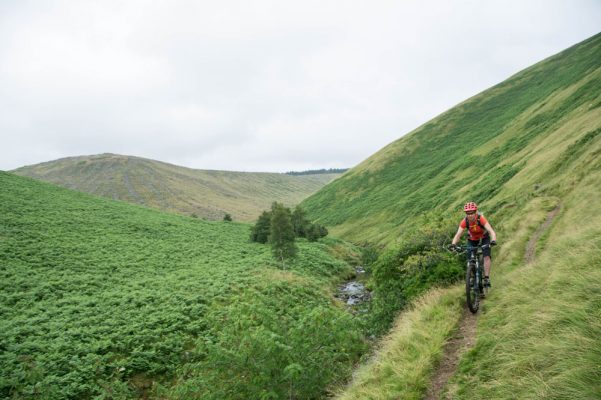Yes, advocacy really does work.
Here are some examples of what trail advocacy has achieved. And here are a number of things that you can do to help out too.
After all, better land access for mountain bikers could be just around the trail…
Snowdon
Some time ago, cycling was threatened with a total ban on Snowdon. The voluntary agreement (not ban) prevented this, and has shown the Snowdonia National Park that mtbers can keep their house in order. More gains will follow. eryi-npa.gov.uk
Moel Famau Country Park, Clwydian Hills
Typically vague upland bridleways were leading mtbers into potential conflict with the very rare and protected black grouse. Denbighshire County Council worked with the local club to create permissive bridleways that helped create some quality moorland loops. ridenorthwales.co.uk
Eastern Moors, Peak District
By promoting responsible riding and offering volunteer labour, advocacy group Ride Sheffield was able to work alongside land managers and create a series of permissive bridleways. ridesheffield.org.uk
The Sandstone Way, Northumberland
This 120-mile long distance mtb route across Northumberland was the result of a lot of hard work by Ted Liddle and the Tyne Valley MTB Cycling Club, in this instance producing both an excellent multi-day route and a much-needed tourism boost for the area. sandstoneway.co.uk
The EX Enduro, Exmoor
Relationship building with local landowners has led to the creation of a radical new three-day enduro event in a little-known corner of the country. the-ex.co.uk
But what can we do as riders to promote the cause?
1. Join your local access forum: Every local authority or National Park has some kind of forum. Their role is to advise decision makers on the local access issues.
2. Join Cycling UK: CTC – now called Cycling UK – has refocused and is now championing recreational riders. It was behind the Rides of Way survey and it’s also created two new positions to campaign for greater off-road access.
3. Support OpenMTB: The small advocacy group is creating a network of local trail organisations and clubs and has acted as an advisory body for both Cycling UK and British Cycling.
4. Join or form a local trail group: These are springing up everywhere and usually care for local trails and form relationships with local authorities and landowners, with the aim of improving access for mountain bikers. OpenMTB’s new website will include information on how to join or create a group.
5. Make friends and influence people: Ride responsibly – Scotland doesn’t actually have Open Access, it has a Responsible Access Code – quite different. If we want the same thing in England and Wales, we need to act responsibly. See this Scottish guide: po.st/ScotAccess.
It’s about interaction with other trail users, showing people we’re just ordinary human beings on bikes, advice on moderating your speed around people, dogs and horses, and avoiding riding on trails when it’s too busy or likely to chew up the ground.




